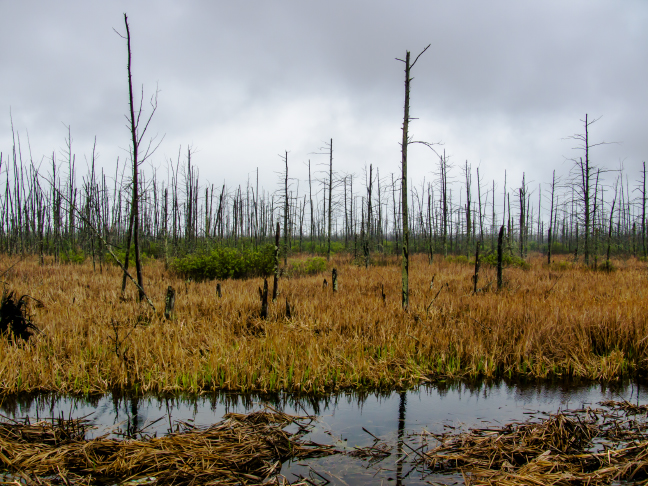
On May 10 of this year, the BBC reported that a U.S. government lab on the isle of Hawaii recorded an atmospheric CO2 concentration of 400 parts per million. That number represents an uncomfortable milestone. Per Erin Wayman of Science News, the Pliocene epoch 5.3 to 2.6 million years ago was the last time atmospheric concentrations of carbon dioxide were that high. Researchers know that from analyzing sediment drillings of strata that old beneath Lake Il'gygytgyn in northeastern Russia, a study coauthored by Julie Brigham-Grette of the University of Massachusetts. Average temperatures back then were from 3 to 8 degrees Celsius warmer than they are today. That's roughly 5 to 14 degrees Fahrenheit warmer than now. And per climate scientist Ashley Ballantyne of the University of Montana, the only way climate models can account for that much warmth in the Earth's atmosphere is the complete absence of Arctic sea ice, a direction we are certainly headed toward. Last summer the northern polar ice cap melted and shrank to a size humans have never seen before. This summer promises even more shrinkage. For those who might not know, carbon dioxide or CO2 helps trap heat within the Earth's atmosphere while sea ice helps reflect incoming heat from the sun. Increase the concentration of CO2 and less heat radiates out into space. Decrease sea ice coverage and more heat from the sun gets absorbed by ground, sea, and air. The result is a much warmer climate. But, things could get worse than that. At least two years ago, scientists observed increased methane releases from areas up north where the ground has been frozen since the end of the Pliocene. Methane is being released because arctic tundra, made up largely of frozen mats of dead vegetation, is beginning to melt and decay with climate change. A worrying turn of events, since methane is an even more potent atmospheric trapper of heat than CO2. Huge volumes of escaping methane from decaying melted tundra could vastly increase the speed at which climate is changing. But, there is a dampening twist to that fear. A recent second report by Erin Wayman of Science News summarizing a 20 year long experiment led by Seeta Sistla of the University of California suggests that new growth on tundra soil as climate warms may slow the atmospheric release of both CO2 and methane from decomposition. In other words, gases released during decay of newly melted tundra may be absorbed by fresh growth almost as fast as it is released, yielding little change to Earth's atmosphere. So, does that mean we have nothing to worry about after all? No, it does not. It merely means things might not be quite as dire as some have imagined. It means the so called tipping point, after which there is no return, might not be the sharp edge of a cliff but the deceptive crest of a gentle slope. May we all find more effective ways to help slow, and possibly reverse, the changes in climate we are irrefutably causing with the burning of fossil fuels, before we do reach that perilous tipping point beyond which there is no return. |
• Posted: Jul 10, 2013 10:26:19
• Comments Welcome
• Vote CoolPhotoblogs
• Purchase a Print
• Share
Wednesday, June 5th, 2013 Wawina MN USA |